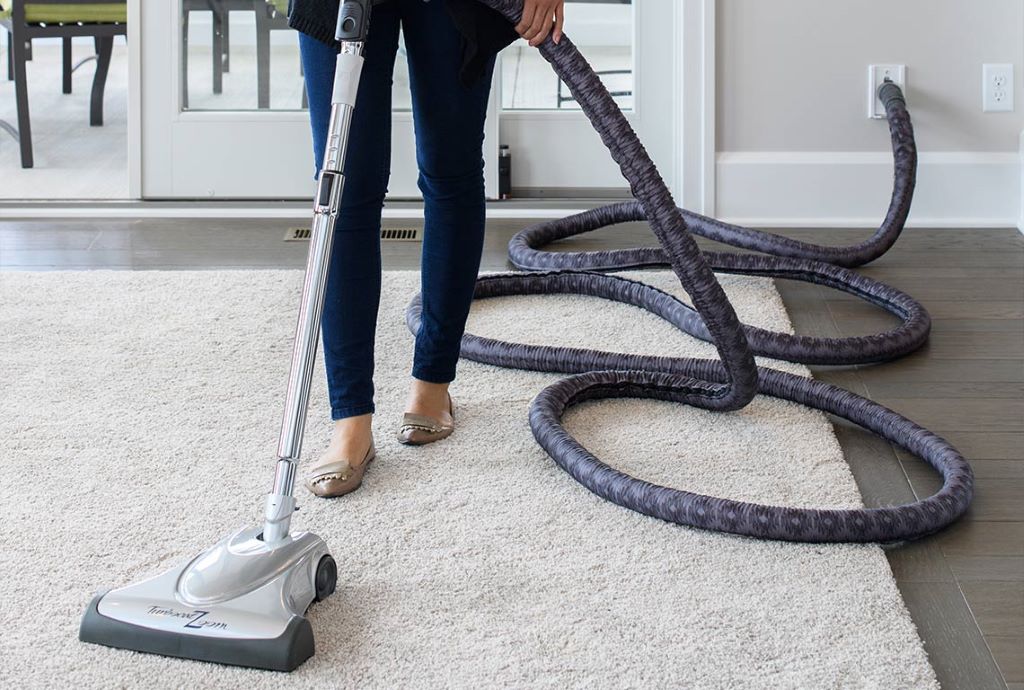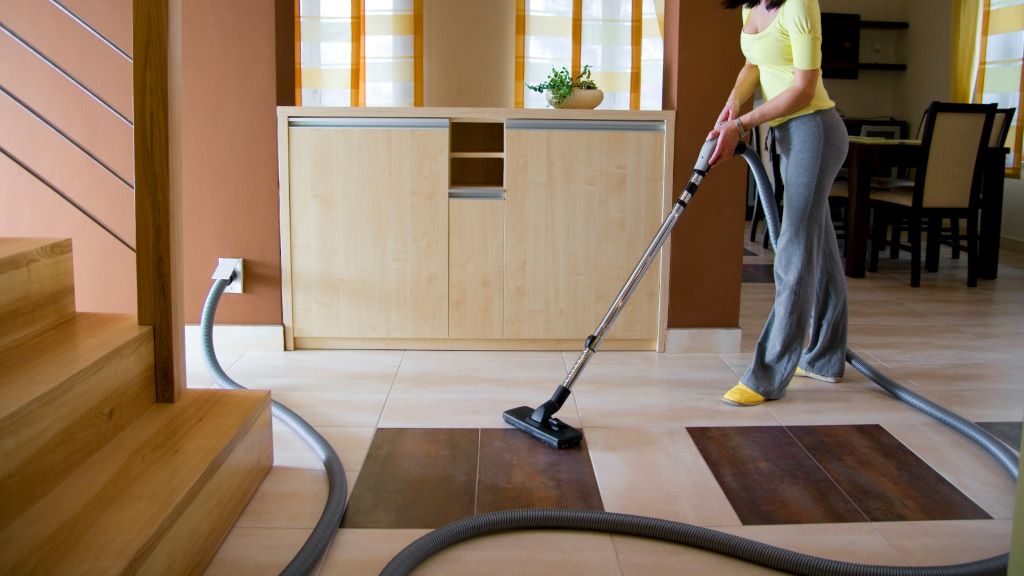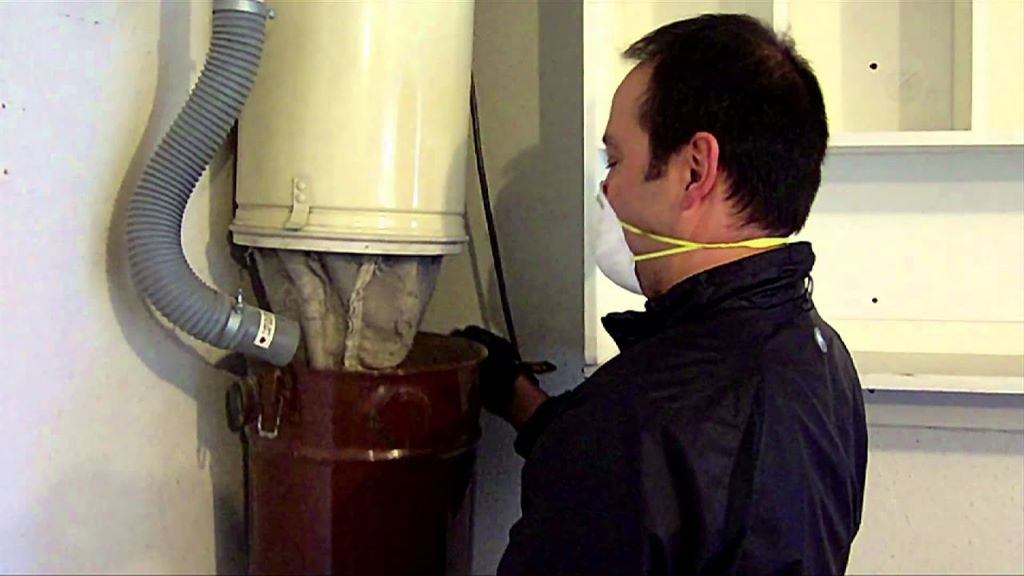
21 Jan How to Clean Central Vacuum System?
A central vacuum system is a great convenience that allows you to clean your entire home without lugging around a heavy vacuum cleaner. However, like any appliance, it requires regular maintenance and cleaning to keep it running at peak performance. A dirty central vacuum won’t have the same powerful suction and can become hazardous.
Fortunately, cleaning your central vacuum system doesn’t have to be complicated or time-consuming. With some essential tools and supplies and a little elbow grease, your system can be running like new again. In this comprehensive guide, I’ll walk you through the entire central vacuum cleaning process from start to finish.
Why Clean Your Central Vacuum System?

Before we get into the nitty-gritty details, let’s review why it’s essential to clean your central vacuum system in the first place:
Maintain Strong Suction Power
Dirt, dust, and debris accumulation in the pipes, hoses, and other components will significantly reduce suction power over time. Regular cleaning clears out all that buildup so your system can breathe freely.
Remove Allergens and Irritants
Central vacuums become filled with dust, pet dander, pollen, and other allergens. Thorough cleaning helps remove these allergy and asthma triggers from your home.
Prevent Clogs and Jams
Large particles, pet hair, and debris can get stuck and clog up various system parts. Cleaning removes these clogs, so everything continues flowing smoothly.
Eliminate Odors
Dust and dirt buildup can cause musty odors over time. Cleaning refreshes the scent and leaves you with a cleaner-smelling home.
Extend the Life of Your System
Regular maintenance keeps your central vacuum running longer and better over many years, like any appliance. Cleaning removes damaging debris and buildup.
Improve Filtration Efficiency
Clogged and full dust bins reduce how well your central vacuum filters the air. Proper cleaning restores top filtration to help capture dust and allergens.
Now that you know why it’s important, let’s explore how does a central vacuum system work and get into how and when you should clean each part of your central vacuum system.
How Often Should You Clean Your Central Vacuum?
Most central vacuum manufacturers recommend cleaning various components at least once or twice a year. However, the ideal cleaning frequency depends on how much use your system gets:
- Clean the primary filter 2-4 times per year
- Empty the main dirt canister 1-2 times per year
- Clean hoses and attachments after each use
- Inspect tubes and pipes 1-2 times per year
- Clean the motor fan annually
Homes with pets or several users may need to clean some parts more frequently. Listen to your central vacuum – if the suction seems weak, it’s time for a cleaning. Get into a regular cleaning routine based on your household needs.
What You’ll Need to Clean a Central Vacuum
Cleaning your central vacuum system doesn’t require buying specialized tools or expensive supplies. Most likely, you already have everything you’ll need:
- An old toothbrush or other small scrub brush
- Cotton rags, towels, or microfiber cloths
- Feather duster or vacuum brush tool
- Mild soap and water
- White distilled vinegar
- Bucket or vacuum canister
- Flashlight or headlamp
- Phillips and flathead screwdrivers
- Utility knife or scissors
- Protective eyewear and mask
- Central vacuum attachments
- Replacement filters and bags
Before you start, turn off the circuit breaker’s central vacuum system and unplug any powered heads. This keeps the system from accidentally turning on while you clean it.
Next, gather all the cleaning supplies and tools you’ll need and lay them out in the area where you’ll be working. Having everything prepped and ready will make the process smoother.
Now, let’s clean each part of your central vacuum system.
Step-by-Step Instructions for Cleaning Your Central Vacuum
Cleaning your central vacuum involves tackling the following areas in order:
- Hoses, attachments, inlets, and tubing
- Collection canister and filter
- Vacuum motor and fan
- Exhaust port
Let’s look at how to clean each section properly:
1. Clean Hoses, Attachments, Inlets and Tubing
The hoses, attachments, inlets, and tubing take the most abuse as they deal with all the daily dirt, debris, and dust. They’ll likely need cleaning most frequently.
Here’s how to clean them:
Hoses and Attachments
- Inspect hoses and attachments for any cracks, damage, or clogs.
- Use a damp cloth to wipe the exterior and remove any surface dirt.
- Attach a hose to the suction end and drop a damp rag through it for a deeper clean. Turn on the vacuum briefly to pull the rag through, which will dislodge any debris inside.
- Use a bottle brush, old toothbrush, or scrub brush to clean the interior of any attachments. Run them underwater while scrubbing.
- Use a damp cloth to wipe out the cuff of each hose where it attaches to inlets.
- Allow hoses and attachments to completely air dry before using them again.
Inlets and Tubing
- Uncover and visually inspect inlet valves and tubing throughout the home for damage or clogs.
- Use a vacuum brush tool or feather duster to gently clean inlet valves and vacuum tubing openings.
- Check for any loose electrical connections to inlet valves and tighten if necessary.
- For plastic tubing, slide a microfiber towel attached to a pole or broom handle to wipe away interior dust.
- Rinse metal or PVC tubes by attaching a hose and sending cups of clean water through. Cover the open end and shake gently to dislodge debris.
2. Empty and Clean Collection Canister and Filter
The collection canister and filter tend to fill up more gradually than other parts of your system. But they must be cleaned regularly so your central vacuum runs at full suction.
Follow these steps:
- Turn off and unplug the central vacuum system.
- Remove the canister from the housing by releasing the latches.
- Empty canister contents into a garbage bag.
- Use a mild soap and water solution to wash out the canister.
- Rinse the canister thoroughly and let the air dry completely.
- Remove the filter from the canister by unscrewing or releasing the retaining clips.
- Check the filter for any tears or damage. Replace if needed.
- Remove dirt or debris from the filter surface using a soft brush or cloth. Avoid washing filters, as this can damage them over time.
- Reinstall the filter once it is scorched.
- Replace the canister into housing, ensuring it clicks securely in place.
3. Clean Motor Fan
The motor fan pulls air through the vacuum system for suction power. Cleaning it ensures debris won’t build up and hinder performance.
To clean, follow these steps:
- Locate the motor housing, usually mounted on the wall or in a closet.
- Unplug the motor before servicing.
- Open the housing door latch, which covers the motor fan.
- Use a feather duster to remove surface dirt and dust from the fan gently. Take care not to bend the fan blades.
- Dampen a clean cloth with vinegar and wipe dirt from the motor body and housing interior.
- Use a small brush or cotton swab dampened with vinegar to dislodge debris between the fan blade crevices.
- Allow all parts to completely dry before reassembly.
- Close the housing and secure the latch before plugging the motor back in.
4. Clean Exhaust Port
The exhaust port is where vacuumed air gets expelled outside after the debris has been captured. This mustn’t get clogged.
Here’s how to clean it:
- Locate the exhaust port outside your home, usually on an exterior wall or roof.
- Use a small mirror to look up inside the exhaust opening and inspect for any obstructions.
- Insert a vacuum brush tool or pipe cleaner to dislodge any debris blocking the exhaust port.
- Finish using a vacuum hose or feather duster to remove all remaining dirt inside the port.
And that covers cleaning all the main components of your central vacuum system!
5 Tips for Keeping Your Central Vac Cleaner Longer

Regular deep cleanings will keep your central vacuum in tip-top shape. But you can also follow these tips to help stay cleaner between full cleanings:
- Always use major vacuum bags – they are designed to contain dust so it doesn’t spread through the pipes.
- Change vacuum bags frequently to prevent overflow.
- Clean filters every 2-3 months if you have pets or allergies.
- Detach hoses after each use and store them higher than the floor level. Keeps debris from settling in hoses.
These tips will minimize dirt exposure in your central vacuum and reduce the required cleaning frequency. But it would be best if you still planned to clean your entire system deep at least once or twice yearly. Maintaining your central vacuum well means you’ll get years of robust and healthy suction power.
Frequently Asked Questions
How do I clean central vacuum hoses?
Use a damp rag to wipe down the exterior. Send a wet rag through the hose end and turn on the vacuum briefly to dislodge interior debris. Allow it to fully air dry before using it again.
Should I wash my central vacuum filters?
Avoid washing filters, as they can damage the material over time. Instead, gently brush debris from the surface and allow it to fully air dry before reinstalling. Replace filters that appear overly dirty.
What’s the best way to clean vacuum tubing?
Plastic tubing can be cleaned by attaching a microfiber cloth to a pole and sliding through the interior. Rinse metal or PVC tubes using a hose to send clean water through.
How often should I empty the canister?
Empty the main dirt canister 1-2 times per year. Homes with pets or frequent use may need to be emptied 3-4 times annually.
When should I have my central vacuum serviced?
Most manufacturers recommend professional servicing every 3-5 years. Schedule service if suction seems weak even after cleaning components yourself.
Can I use any vacuum bag with my central vacuum?
No, using vacuum bags designed explicitly for central vacuum systems would be best. Other bags may leak dust into the system.
What areas should I check for clogs?
Inspect inlet valves, tubes, canister filter, and exhaust port for obstructions. Clear any clogs found.
Regularly cleaning your central vacuum provides maximum suction and cleaning convenience for many years. Follow these tips and washing steps to keep your system in great shape.
Conclusion
Cleaning and maintaining a central vacuum system is essential for peak performance. Allowing dust and debris buildup to accumulate will reduce suction power and ultimately shorten the life of your unit.
You can restore full suction by regularly cleaning all components like the hoses, canister, tubes, and motor. This helps capture dust and allergens rather than recirculating them in your home. Deep cleaning your central vacuum at least 1-2 times yearly will clear away damaging grime before it causes significant problems. Wondering, why is the red light flashing on my Shark? Addressing this concern ensures your central vacuum operates seamlessly, guaranteeing cleaner floors and fresher indoor air. Don’t overlook this crucial task; maintain your system for peak performance and let your central vacuum excel at what it does best!
